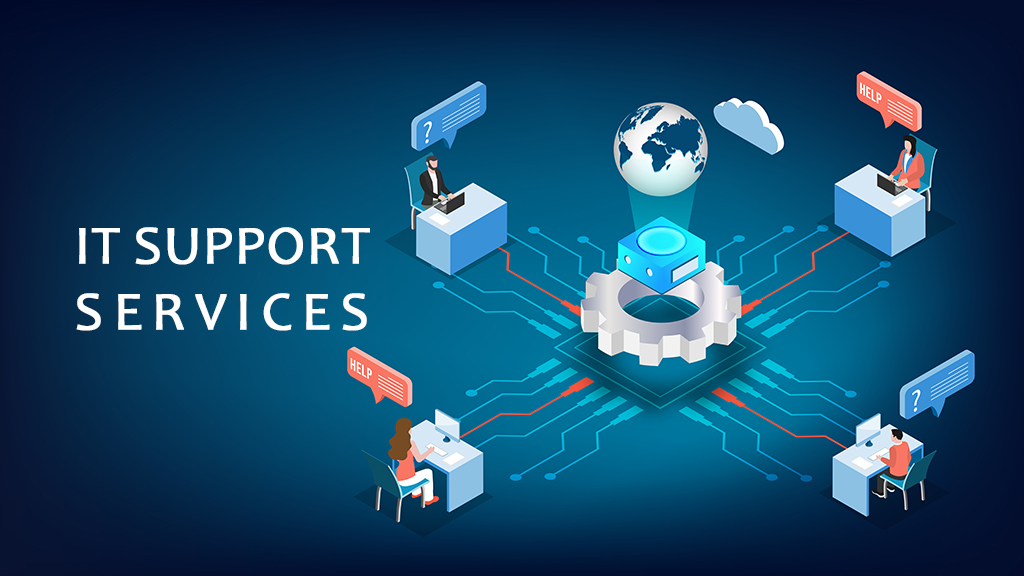
Beyond Break-Fix: What Strategic IT Support Looks Like for Bozeman Businesses
Are you tired of technology being a source of constant frustration? For many growing Bozeman businesses, IT feels like a relentless cycle of putting out fires. A server goes down right before a client deadline, a key software program stops working, or you’re hit with another unexpected repair bill. This reactive approach, where you only call for help when something is already broken, is a significant barrier to growth.
To scale successfully in Bozeman’s competitive market, your business needs to move beyond this outdated model. This article will show you the hidden costs of your current “break-fix” approach and introduce you to a proactive, strategic partnership that can transform your technology from a liability into your greatest competitive advantage. You’ll learn what strategic IT support is, how it works, and why it’s a foundational investment for any business with serious ambitions.
Table of Contents
Key Takeaways
- The traditional “break-fix” IT model creates unpredictable costs, security vulnerabilities, and productivity-killing downtime that hinders business growth.
- Strategic IT support (or Managed IT Services) is a proactive approach focused on preventing problems, optimizing systems, and aligning technology with long-term business goals.
- Key components of a strategic plan include robust cybersecurity, reliable data backup and recovery, and forward-thinking infrastructure planning.
- Partnering with a local Bozeman IT provider ensures an understanding of the unique market dynamics and provides responsive on-site and remote support.
The Familiar Frustration: Are You Stuck in the Break-Fix Cycle?
If your relationship with technology is defined by emergency calls and unexpected invoices, you’re likely caught in the break-fix cycle. It’s a common starting point for many businesses, but it’s a model that actively works against stability and growth.
What is “Break-Fix” IT Support?
The break-fix model is simple: when a piece of technology breaks, you call a technician to fix it. You pay for their time, parts, and expertise for that specific incident. This approach treats your IT infrastructure not as a strategic asset, but as a line-item expense to be dealt with only when absolutely necessary.
The relationship is purely transactional. The IT provider is only engaged when there’s a problem, and their revenue is directly tied to your failures. This creates a fundamental conflict of interest; there is no incentive for them to prevent future issues because their business depends on your downtime. While this might seem cost-effective initially, it has a very low ceiling for any business looking to scale.
The Hidden Costs and Risks of Reactive IT
The invoice for a repair is only the most visible cost. The true price of a reactive IT model is far higher and much more damaging to your bottom line and reputation.
The most immediate cost is downtime. Every minute your systems are offline, your business is losing money. Employees are paid for unproductive time, sales opportunities are missed, and customer trust erodes. But the financial risks go much deeper, especially regarding security. Without proactive monitoring and maintenance, your network is an open invitation for cybercriminals.
Beyond security, the break-fix model offers zero strategic foresight. There’s no one helping you plan for growth, budget for necessary upgrades, or choose the right software to improve efficiency. Your technology stagnates, becoming a bottleneck rather than an engine for growth.
The Tipping Point: Moving from Reactive to Proactive IT
How do you know when your business has outgrown the break-fix model? Ask yourself these questions:
- Are IT problems constantly distracting you and your team from core business functions?
- Are you worried about the financial and reputational damage of a potential data breach?
- Does your technology feel like it’s holding you back from hiring more people or expanding your services?
If you answered yes to any of these, you’ve reached a tipping point. The old model is no longer serving you; it’s creating a bottleneck that prevents growth. The alternative is to move from a reactive model to scalable IT support for Bozeman, Mt, fast-moving businesses. This involves shifting to a strategic IT partner whose success is directly tied to your uptime and stability, not your problems.
What is Strategic IT Support? A Proactive Partnership
Strategic IT support, often called Managed IT Services, is a fundamentally different approach. It’s not about waiting for things to break; it’s about building and maintaining a technology environment where they don’t.
The Proactive Philosophy: Prevention Over Repair
A strategic IT partnership means a provider takes full responsibility for your entire IT environment for a predictable, flat monthly fee. This model aligns the provider’s goals with yours. Their profitability depends on keeping your systems secure, stable, and running smoothly.
This is achieved through 24/7 remote monitoring, automated patching and security updates, and preventative maintenance. By constantly monitoring the health of your network, a strategic partner can identify and resolve potential issues long before they escalate into business-disrupting emergencies. The goal is to eliminate the very crises that the break-fix model thrives on.
The Core Components of a Strategic IT Plan
“Strategic support” is more than just keeping the lights on. It’s a comprehensive approach that addresses every aspect of your business technology.
- Comprehensive Cybersecurity: This goes far beyond basic antivirus software. It includes managed firewalls, continuous threat monitoring, phishing prevention, employee security training, and compliance management, particularly for businesses in regulated industries like finance and healthcare.
- Data Backup & Disaster Recovery: What happens if your server fails or a ransomware attack encrypts all your files? A strategic partner ensures you have a robust, tested plan to restore your data and get back online quickly, minimizing disruption.
- Cloud & Infrastructure Management: Your partner will manage essential tools like Microsoft 365, ensuring your cloud resources are secure, efficient, and configured to meet your specific business needs. They handle the complexities so you can focus on your work.
- IT Strategy & Planning: This is where a true partner shines. They work with you to create a technology roadmap that aligns with your business goals, helps you budget for future needs, and ensures your IT can support your growth instead of holding it back.
The Business Case: Why Strategic IT is a Smarter Investment
Moving to a strategic model isn’t just about better technology; it’s about making a smarter business decision that delivers a clear return on investment.
Comparing IT Support Models: Break-Fix vs. Strategic Partnership
This table breaks down the fundamental differences in a way that highlights the business impact of each approach.
| Feature | Break-Fix Model | Strategic Partnership Model |
|---|---|---|
| Cost Structure | Unpredictable, hourly rates | Predictable, flat monthly fee |
| Business Focus | Fixing current problems | Preventing future problems & enabling growth |
| Downtime | High and unexpected | Minimized and planned |
| Security | Reactive and vulnerable | Proactive and layered |
| Scalability | Difficult and expensive | Planned and streamlined |
The Tangible Benefits for Your Bozeman Business
When you adopt a strategic IT partnership, the benefits ripple across your entire organization.
- Improved Security & Reduced Risk: You dramatically lower the chances of suffering a costly data breach or ransomware attack that could cripple your operations.
- Predictable IT Budgeting: The flat monthly fee turns a volatile capital expense into a stable operating expense. This makes financial planning easier and eliminates surprise invoices.
- Increased Productivity: With maximized uptime and optimized systems, your employees have the reliable tools they need to do their jobs effectively and without frustrating interruptions.
- Access to Expertise: You gain an entire team of specialists—in cybersecurity, cloud computing, network management, and strategy—for less than the cost of hiring one senior in-house IT person.
- Competitive Advantage: In the fast-paced Bozeman market, technology is a key differentiator. A strategic partner helps you use it to operate more efficiently, serve customers better, and scale faster than your competitors.
Why a Local Bozeman Partner Matters
While many IT providers operate remotely, there is a distinct advantage to working with a partner who is physically present in your community. A local partner understands the “BoZone” business landscape—its rapid growth, its unique industries like tech and professional services, and its specific challenges.
When a critical issue arises that requires an on-site presence, like a major hardware failure, you need a team that can be there quickly. A local partner is more than a vendor; they are part of the same business community, invested in your success because it contributes to the health of the local economy. They are truly “onsite, on-call, and on your side.”
Conclusion: Build Your Business on a Foundation of Strategic IT
The reactive, break-fix IT model is an outdated approach that actively works against the goals of a growing Bozeman business. It creates unpredictable costs, leaves you vulnerable to cyber threats, and stifles the very growth you’re working so hard to achieve.
Shifting to a proactive, strategic IT partnership is a foundational step for achieving sustainable growth, robust security, and a lasting competitive edge. It’s time to stop letting technology be a source of stress and start making it your greatest asset. Take a hard look at your current IT support and ask if it’s truly preparing your business for the future.








